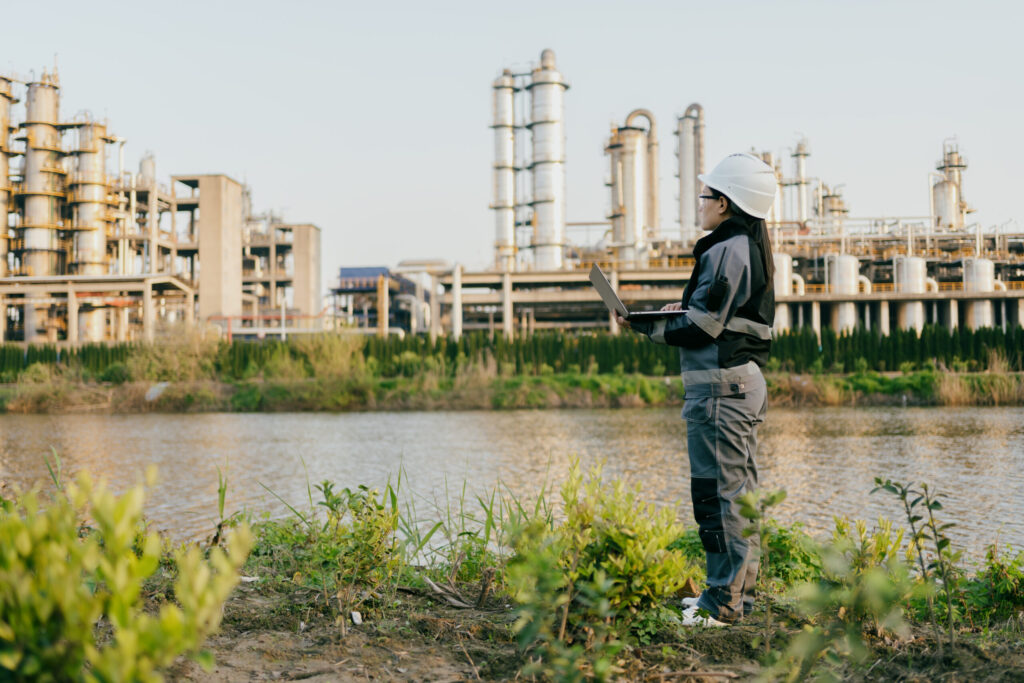COLLABORATING WITH THE CHEMICAL INDUSTRY ON WATER STEWARDSHIP
By Matt Howard, Vice President, Water Stewardship, The Water Council, and Sharon Dubrow, Senior Director, Sustainability, American Chemistry Council
 Something relatively unusual has happened across the United States this year: 49 of the 50 states in the U.S. experienced some degree of drought. All but two states were in drought as 2024 ended – a record for the United States[1].
Something relatively unusual has happened across the United States this year: 49 of the 50 states in the U.S. experienced some degree of drought. All but two states were in drought as 2024 ended – a record for the United States[1].
The headlines are jarring, with wildfire devastation of forestland near Brooklyn’s Prospect Park and the devastating property loss around Los Angeles. At the same time, significant intense rain events have decimated communities in the southeastern area of the U.S., with the flooding in North Carolina and Florida last fall top of mind.

Taken as a whole, these disparate water-related crises may seem contradictory and outright confusing. But this is the new normal. As a result, communities and businesses will need to develop a more comprehensive risk radar when it comes to drought, extreme weather events and declining water quality. For example, aging infrastructure is increasingly incapable of dealing with this “new normal.”
For too long, only those areas that were prone to drought, or where water was scarce, tended to be concerned about water accessibility issues. But with drought conditions now a real possibility across the U.S., and extreme weather events disrupting supply chains in regions relatively untouched previously, businesses need to prioritize water stewardship[2], no matter where they operate.
Chemical industry actions to advance water stewardship
Chemical manufacturing is a water-intensive process, which is why chemical manufacturing facilities are advancing water stewardship, with an emphasis on responsible water usage and conservation efforts. The American Chemistry Council (ACC) and its members recognize the water resource challenges that communities face, which may include not enough water when we need it, too much water when we don’t or water of poor quality.
To respond to these challenges, ACC collaborated with The Water Council to develop the Water Body Risk Assessment (WBRA), which provides a framework and step-by-step methodology to help ACC members understand their water uses, impacts and risks in the communities in which they operate. This process-based approach to expanding a company’s risk radar yields actionable intelligence that can help address a range of water-related risks: from physical risks (quality and quantity) to reputational risks (brand value and social license to operate), as well as regulatory risks (that may impact how and when companies can directly withdraw surface or ground water).
The WBRA outcomes are more than “feel good” actions to highlight in corporate sustainability reports. Outcomes that participating companies have reported to-date include reduced or avoided costs, as well as potential actions that can help keep companies ahead of the regulatory curve, mitigate risks impacting source water needed to run facilities, and build more resilient operations. In fact, CDP has estimated that the cost of inaction can be up to five times the cost[3] of addressing water risks when they are first identified.
Companies can no longer assume operations and supply chains are reliable from a water-risk perspective simply because they do not operate in historically water scarce regions. Water crises can happen anywhere, at any time. ACC’s Water Stewardship Program is proactive, helping ACC members before a potential crisis situation happens. Developing and increasing knowledge on water risk through the WBRA can lead to more resilient operations, lower costs and enhanced brand value.

Footnotes:
[1] NASA Earth Observatory, Drought Expands Across the U.S.
[2] The Alliance for Water Stewardship defines water stewardship as the use of water that is socially and culturally equitable, environmentally sustainable and economically beneficial, achieved through a stakeholder-inclusive process that includes both site- and catchment-based actions.
[3] CDP GLOBAL WATER REPORT 2020, page 12.